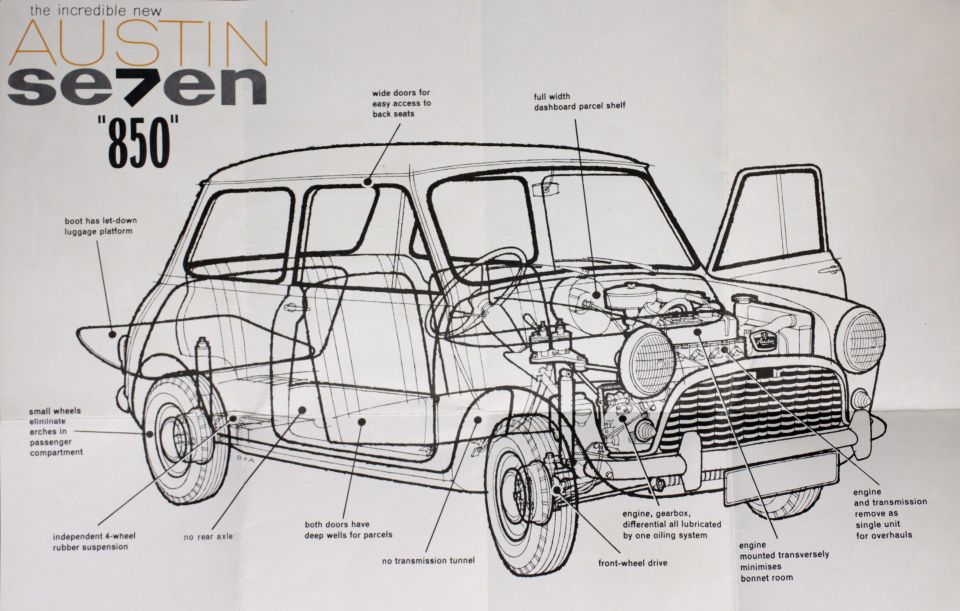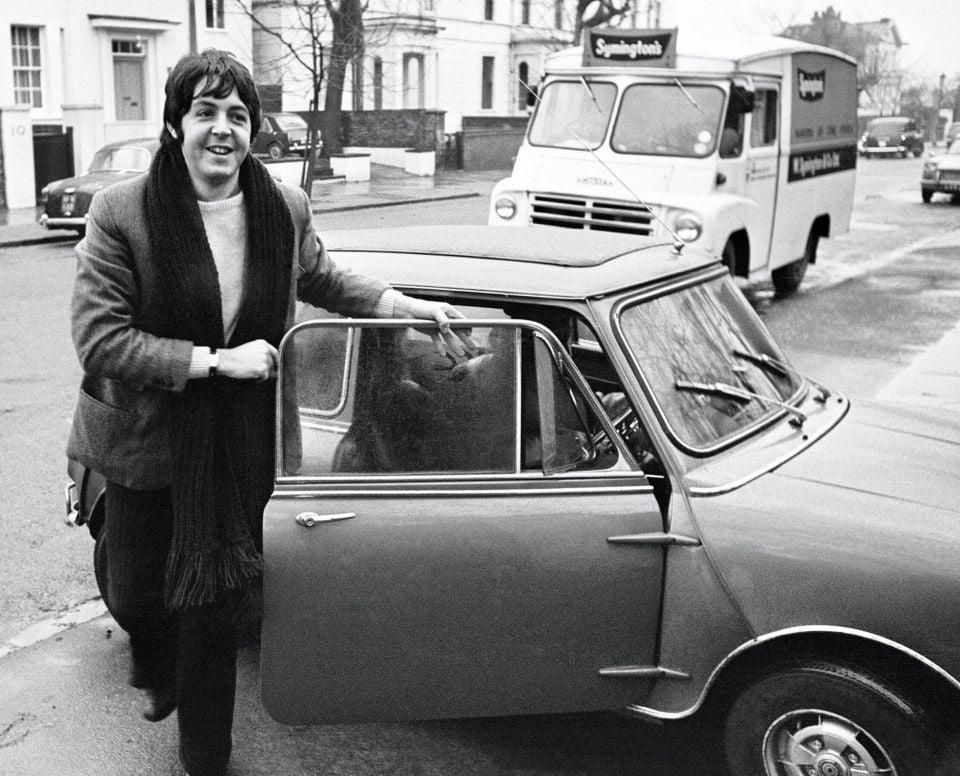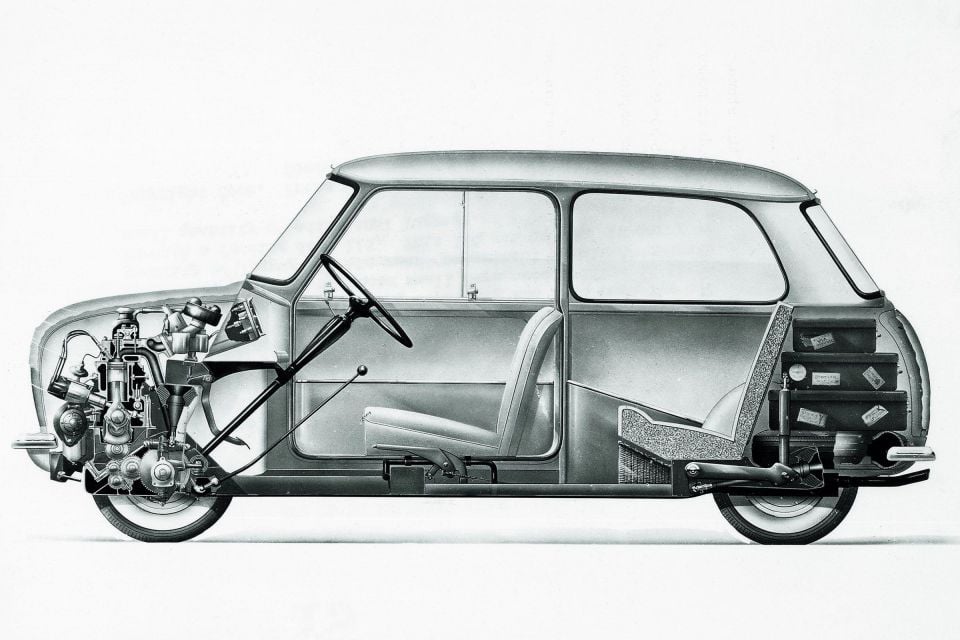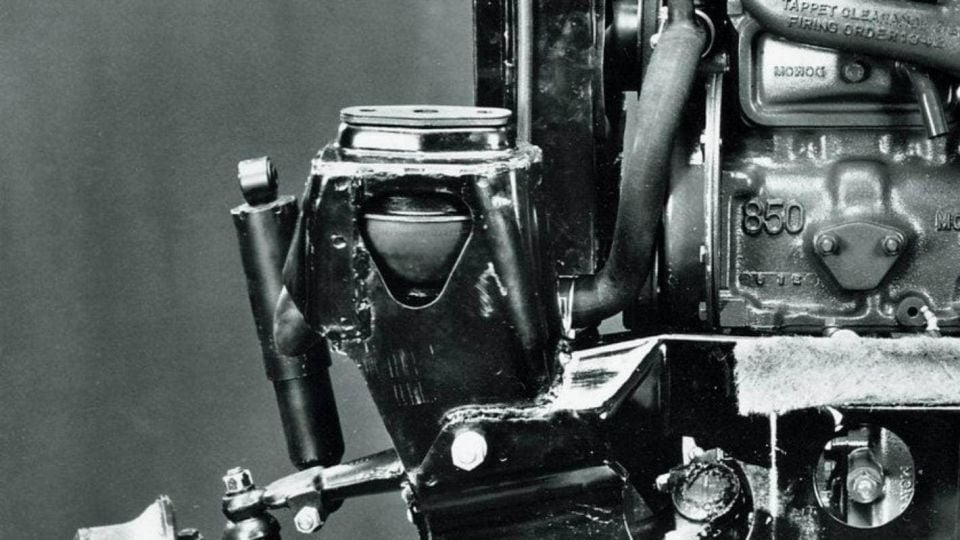

CarExpert.com.au
The CarExpert team's favourite cars of 2025
8 Hours Ago
From The Italian Job to Mr Bean, the original Morris/Austin Mini is an icon of British culture.

Contributor


Contributor
When Sir Alec Issigonis penned the original Morris Mini Minor in the late 1950s, he was given a brief to design a car that would be no more than 3.0 metres long, 1.2 metres wide, and 1.2 metres high.
It would also have to carry four people and their luggage, and be affordable to buy. The overarching design and engineering objective could therefore best be summarised by the phrase ‘mini on the outside, maxi on the inside.’
Little did he know the resulting design would become legendary in automotive folklore. A truly classless vehicle owned by everyone from typical middle-class families to The Beatles, the original Mini further cemented its status as an icon when a trio of red, white and blue examples featured prominently in the 1969 film The Italian Job (and its 2003 remake).
Famously, it was also Mr Bean’s beloved car of choice in the eponymous 1990s TV series.

From a technical perspective, perhaps the elements that helped make the Mini so unforgettable were its innovative front-wheel-drive/transverse engine drivetrain, the unique suspension systems used, and the two-box, wheels at each corner design that helped maximise space and endowed the car with the fun, go-kart handling for which it’s famous.
Although the Mini wasn’t the first car to make use of a transverse engine (where the engine is aligned east/west across the engine bay) and front-wheel drive layout, it did take full advantage of the benefits offered by such a design.

The primary concern when designing the Mini was how to maximise passenger space within such compact dimensions. Most cars at the time used a front-engine, rear-wheel drive layout (FR).
This compromised interior space as the passenger compartment had to accommodate components such as the driveshaft to transfer power from the engine to the rear wheels. Additionally, in the FR layout, the engine would be mounted longitudinally (north-south), requiring a longer bonnet and reducing passenger space.
By mounting the engine parallel to the axles (east-west), the proportion of space taken up by the engine relative to the car’s overall length was minimised. This was aided by the transmission being placed directly beneath the engine block, to the extent they shared the same sump and the engine oil also lubricated the gearbox.

Other parts of the car were also subject to a thorough examination to determine how space could be maximised.
In an age of limited safety regulations, the car was designed with sliding windows so the size of the door bins was maximised (and could also hold bottles of Gordon’s gin and vermouth, being the ingredients of Issigonis’ favourite drink, a dry martini).
A hatchback would have compromised body rigidity, with the fixed rear parcel shelf providing additional bracing, so the tailgate was also hinged at the bottom with a flip down number plate holder. This allowed large items to be legally carried with it fully open.

Suspension is key to vehicle dynamics and performance and, depending on the type used, can also pay dividends with regard to vehicle affordability.
It’s for this reason many small cars sold today use a torsion beam rather than independent rear suspension. In the Mini’s case, the suspension also played a part in optimising interior space.
Initial versions of the Mini made use of an innovative rubber cone suspension design. Rather than the typical steel coil springs and shock absorbers, the Mini used space-saving, short-travel rubber cones, enabling front and rear suspension to each be mounted to the chassis within a self-contained subframe.
The conical shape and characteristics of rubber as the suspension material meant it effectively offered a variable spring rate. On smooth surfaces and under low compression a softer ride could be provided, while over large bumps and high compression the cones stiffened up.
Together with the tiny 10-inch wheels this suspension system not only saved cost, but served as the foundation for the car’s famous go-kart handling – with the drawback of a firm ride on uneven surfaces.

Minis sold from 1964-1971 attempted to resolve these issues with a stiff ride over bumps through the introduction of the Hydrolastic ‘float on fluid’ suspension system. An early hydraulic suspension system, this system replaced the rubber cones with what could best be described as rubber bladders (one per wheel) with an internal diaphragm, known technically as integrated fluid dampers.
The front and rear bladders were linked through narrow pipes which facilitated a transfer of the fluid (a mix of water and alcohol) between the bladders.

This system eliminated the car pitching over bumps. If the front wheel hit a bump, the upwards movement of the wheel displaced liquid out of the front bladder and channelled it to the rear wheel, causing the corresponding rear bladder to expand and the body to also be pushed up, keeping the car level.
Overall, the system helped reduce any jitteriness from the ride, but was phased out in 1971 due to its added expense of the system.
Another factor enabling the Mini’s trademark two-box, wheels at each corner silhouette and contributed to its performance characteristics was the use of a monocoque construction (apart from separate subframes to house the suspension).
Unlike a body-on-frame design where non-load bearing body panels are attached to an underlying ladder chassis, a monocoque integrates the chassis and body into a uniform whole. For the Mini, this technique reduced weight and improved rigidity, contributing to its renowned handling.
On early models, the body panels were also welded from the outside, and hinges for the doors and boot were mounted on the outside, further freeing up interior space.



CarExpert.com.au
8 Hours Ago


Damion Smy
22 Hours Ago


Damion Smy
1 Day Ago


Damion Smy
1 Day Ago


Damion Smy
1 Day Ago


Damion Smy
1 Day Ago